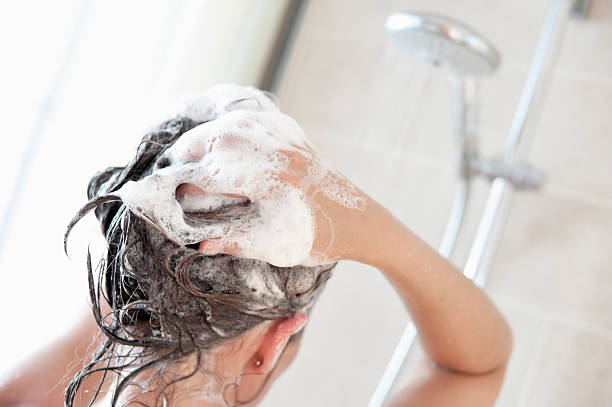In recent years, there has been a growing awareness of the impact of personal care products on our health and the environment. Among these products, shampoo holds a significant place in our daily hygiene routine. Fragrance-free shampoos, in particular, have gained popularity as people become more conscious of potential allergens and sensitivities associated with artificial scents. However, understanding the ingredients in fragrance-free shampoos is equally important for making informed choices about our hair care products.
This article delves into the key components of fragrance-free shampoos, shedding light on their roles and potential effects.
The Basics of Shampoo Formulation
Shampoos, at their core, are formulated to cleanse the hair and scalp by removing dirt, oils, and styling products. The primary ingredients in any shampoo include water, detergents, and conditioning agents. Fragrance-free shampoos, as the name suggests, exclude artificial fragrances and may also limit the use of certain essential oils that contribute to the scent.
Detergents
Detergents, also known as surfactants, are crucial for the cleansing action of shampoos. They work by breaking down oils and dirt, allowing them to be rinsed away. Common detergent ingredients include sodium lauryl sulfate (SLS), sodium laureth sulfate (SLES), and cocamidopropyl betaine. In fragrance-free shampoos, the choice of detergents is often carefully considered to minimize irritation and cater to sensitive skin.
Conditioning Agents
To counteract the potential drying effect of detergents, shampoos contain conditioning agents that help maintain the hair’s moisture balance. Examples of conditioning agents include silicones, fatty alcohols, and cationic surfactants. In fragrance-free shampoos, these ingredients are selected for their moisturizing properties without introducing artificial fragrances that might cause irritation.
Emollients
Emollients are substances that enhance the softness and smoothness of the hair. They form a protective layer on the hair shaft, reducing friction and improving combability. Common emollients found in fragrance-free shampoos include natural oils like jojoba oil, shea butter, and olive oil.
Preservatives
Preservatives are crucial in preventing the growth of bacteria, mold, and fungi in shampoo formulations. While many traditional preservatives are known irritants, fragrance-free shampoos often opt for milder preservatives, such as phenoxyethanol or ethylhexylglycerin, to minimize the risk of skin reactions.
Humectants
Humectants attract and retain moisture, helping to keep the hair hydrated. Ingredients like glycerin and hyaluronic acid are commonly used humectants in fragrance-free shampoos. These substances can enhance the shampoo’s moisturizing properties without relying on artificial fragrances.
pH Adjusters
Maintaining the correct pH level is crucial for the health of the scalp and hair. pH adjusters, such as citric acid or sodium hydroxide, are used to balance the acidity of the shampoo. Fragrance-free shampoos pay attention to the selection of pH adjusters to minimize the risk of scalp irritation.
Antioxidants
Antioxidants play a role in protecting the hair and scalp from environmental damage. Vitamin E, for example, is a common antioxidant found in fragrance-free shampoos. These ingredients contribute to the overall health of the hair and may have a soothing effect on the scalp.
Allergen-Free Formulas
In addition to omitting artificial fragrances, fragrance-free shampoos often strive to eliminate common allergens and irritants. This may include avoiding certain botanical extracts, essential oils, and other potential sensitizers that could cause adverse reactions in individuals with sensitive skin.
Natural and Organic Ingredients
Many fragrance-free shampoos capitalize on the growing demand for natural and organic products. Ingredients such as aloe vera, chamomile, and green tea are frequently incorporated for their purported soothing and nourishing properties.
Understanding Ingredient Labels
To make informed choices about fragrance-free shampoos, consumers need to be savvy about reading ingredient labels. Ingredients are typically listed in descending order of concentration, with the highest concentrations first. This information helps consumers identify the primary components of the shampoo and understand the formulation’s overall composition.
Potential Concerns and Controversies
While fragrance-free shampoos are generally considered gentler on the skin, it’s essential to recognize that individual reactions vary. Some people may still experience sensitivity to certain ingredients, even in fragrance-free formulations. Additionally, debates surrounding the environmental impact of certain shampoo ingredients, such as silicones, highlight the need for ongoing research and product development in the beauty industry.
The Future of Fragrance-Free Shampoos
The future of fragrance-free shampoos promises a revolution in the way we approach hair care, driven by a growing awareness of the potential health and environmental impacts of traditional scented hair products. As consumers become more conscious of the ingredients they put on their bodies, fragrance-free shampoos are gaining popularity for several compelling reasons.
Firstly, the demand for fragrance free shampoo options is closely tied to the rise of skin sensitivities and allergies. Many individuals experience adverse reactions to the synthetic fragrances commonly found in traditional shampoos. As awareness of these sensitivities grows, consumers are actively seeking products that eliminate the risk of skin irritation, redness, or allergic reactions. Fragrance-free shampoos, formulated without artificial fragrances and known irritants, offer a gentler alternative for those with sensitive skin or allergies.
Moreover, the shift towards fragrance-free options aligns with a broader trend of eco-conscious consumerism. Traditional shampoos often contain a cocktail of chemicals that not only affect personal health but also contribute to water pollution and environmental degradation. As sustainability becomes a central focus, fragrance-free shampoos are gaining traction for their minimalistic, clean formulations that reduce the overall environmental impact of hair care products.
In addition, the fragrance-free movement is likely to be fueled by the increasing popularity of natural and organic ingredients. Consumers are showing a preference for plant-based, cruelty-free, and ethically sourced ingredients in their beauty and personal care products. Fragrance-free shampoos often leverage these trends by incorporating natural extracts and essential oils for their beneficial properties without compromising on the scent-free aspect.
The future of fragrance-free shampoos, therefore, envisions a market where consumers have access to products that not only cater to their skin sensitivities but also align with their ethical and environmental values. As research and innovation continue, we can anticipate the development of advanced formulations that offer effective, pleasant, and scent-free alternatives, reshaping the landscape of the hair care industry.
Conclusion
Understanding the ingredients in fragrance-free shampoos is crucial for those seeking a gentler and potentially allergen-free hair care routine. As consumers become more discerning about the products they use, the beauty industry responds with formulations that prioritize health, sustainability, and transparency. By staying informed about the key components of fragrance-free shampoos, individuals can make choices that align with their values and contribute to a more conscious and responsible approach to personal care.



